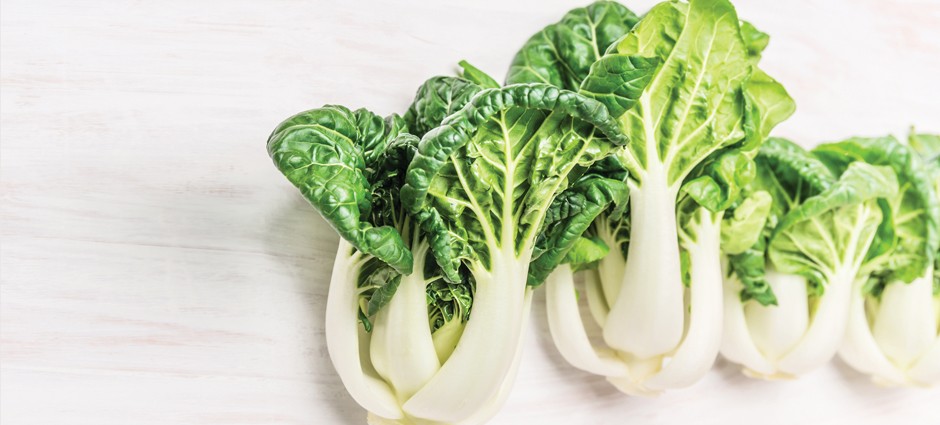Don’t let the unusual name intimidate you. Bok choy is a mild-tasting, leafy veggie that is simple to make and ridiculously good for you. In fact, it ranks number six out of all foods as having the most nutrients per calorie.
What’s in It?
Bok choy is a cruciferous vegetable, which means some of its more common cousins include kale, broccoli, cauliflower and brussels sprouts. In taste, it’s most similar to mustard greens (another fellow crucifer), although it’s much milder, with almost a sweet taste to it. In the produce aisle, you’ll also find baby bok choy, which is a less mature (and much cuter!) version of the regular variety with slightly more tender leaves.
What’s inside?
One cup of bok choy delivers 63 percent of your daily vitamin A needs, 52 percent of vitamin C and 40 percent of vitamin K. It packs potassium, lutein, folate and 70 antioxidants, which makes it a candidate for cancer prevention, according to research. Bok choy loses a smidge of its nutrients when it’s cooked, but it’s also easier to eat more cooked than raw, so you’ll probably come out about even.
What do you do with it?
Eat it raw: Bok choy makes an excellent salad base or shell for lettuce wraps.
Stir-fry it: Its Asian heritage means it’s a natural fit for stir-fries. Or try it as a side dish, lightly sautéed with a bit of oil, garlic and ginger.
Add it in: Stir it into any soup that can accommodate leafy greens (don’t forget the stalks!), or sprinkle torn pieces of bok choy into your scrambled eggs in the last few moments of cooking. The mild flavor makes it a good choice for a smoothie mix-in, too.
Grill it: Leave whole or cut in half lengthwise. Brush or toss with olive oil, sprinkle with garlic salt, and grill to desired charred-ness, 3–6 minutes per side. Or place in a grill basket and toss halfway through.
I Say Bok Choy; You Say Pakchoi
Its Cantonese name means “white cabbage,” but the English spelling of bok choy can take many forms, including “bok choi,” “pakchoi,” “buk choy” and “pok choi.” It’s also known as Chinese white cabbage, celery cabbage, Chinese mustard and white celery mustard. It’s a close relative of napa cabbage, which, unlike bok choy, grows in a compact head.
TIP:
Don’t be afraid to eat the stalks—even raw. They’re tender, refreshing and way less stringy than those on most leafy greens.
Try these yummy recipes using bok choy:

